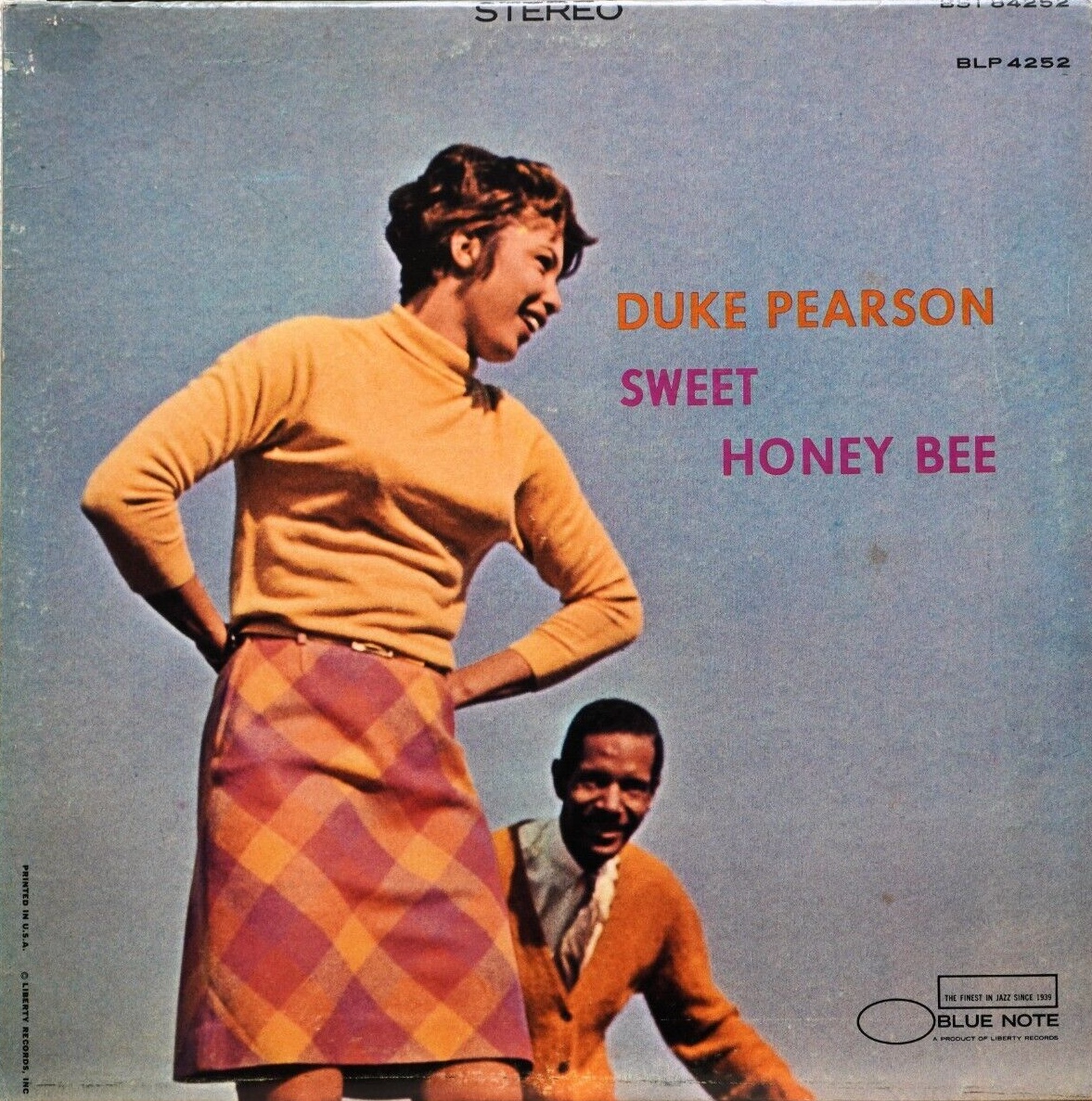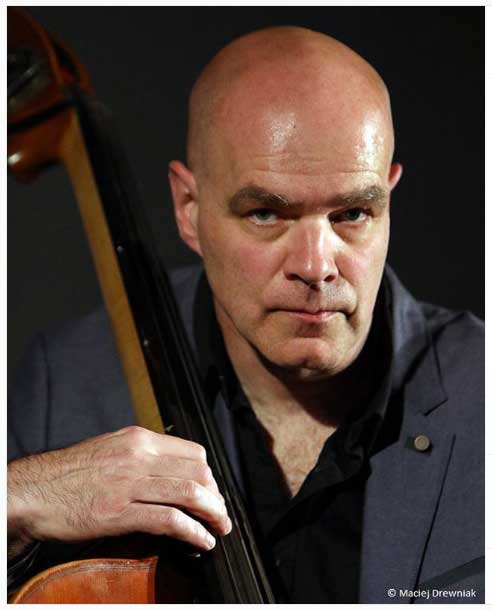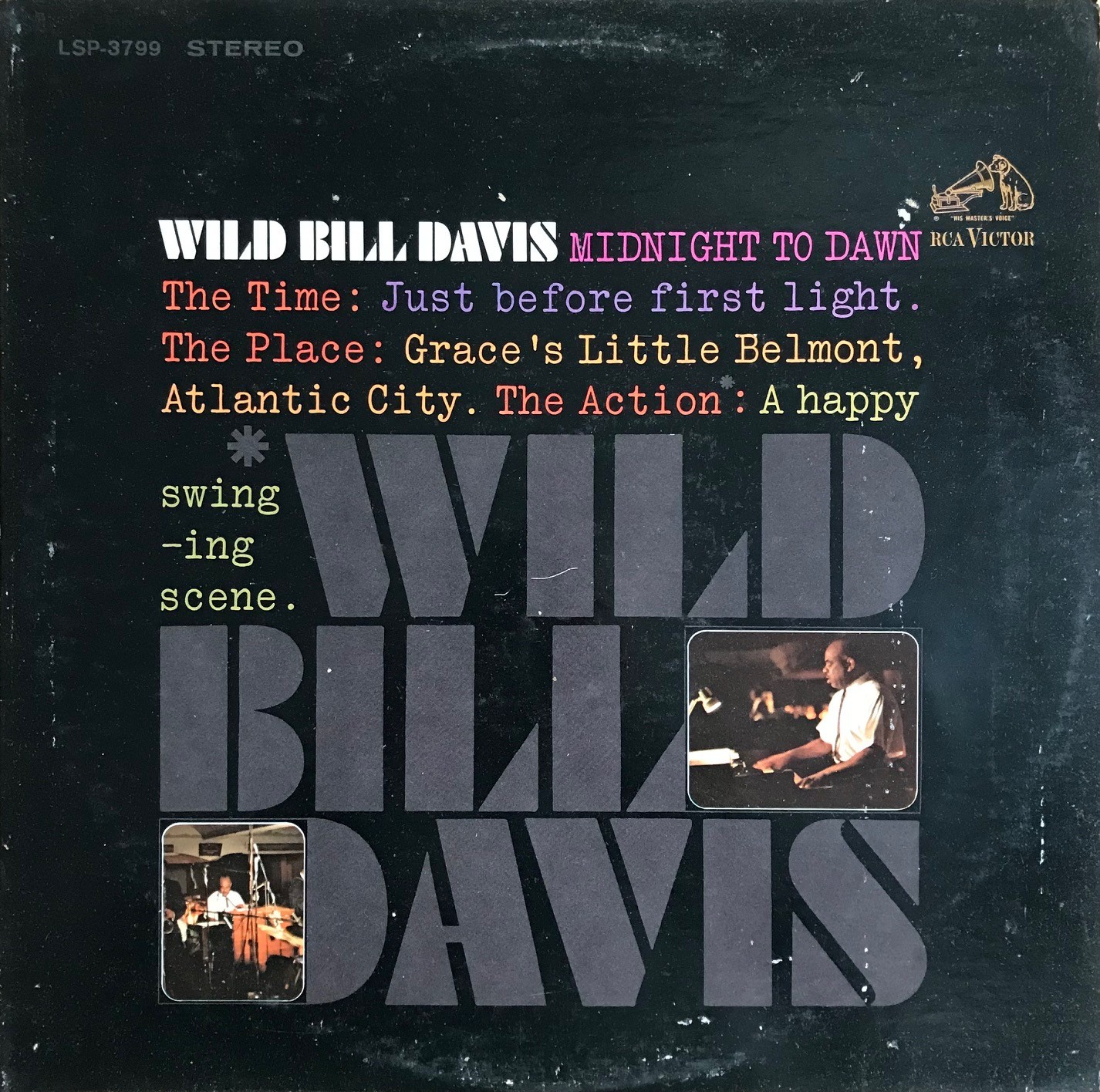
Sought-after bassist Joris Teepe has been on a very tight schedule for decades, a Holland-born New York stalwart with an imposing career as leader, sideman and composer. One of various latest projects is The American Dream Today. Teepe’s personal good fortune contrasts sharply with worrisome socio-political developments. “It seems like everybody continues to live as if everything will eventually turn out fine. But I wouldn’t be too sure about that.”
He’s a tall, solid man, the kind you don’t accidentally want to bump into in the crosswalk. Regardless of his solid frame, Teepe suddenly found himself falling to the ground just recently, dazed and confused. On stage, to boot, at the Blue Note club in Athens, Greece.
“I suddenly felt awful, sweating profusely. Danny (Grissett, FM) saw that I was collapsing and the guys rushed over. I had to go to the hospital. It turned out that I had a bacterial infection. Unfortunately, we had to cancel the last two shows.”
Teepe is charging his batteries at his home in Amsterdam, a cup of tea in front of him. His wife is out, his son is at school. At his large kitchen table, Teepe casually goes through some of his recent activities, his unassuming manners differing strikingly from the impressive nature of his list. His itinerary included promotional gigs of Steve Nelson/Joris Teepe/Eric Ineke’s Common Language album, the release of saxophonist Johannes Enders’ The Creator Has A Master Plan B and his umpteenth recording with his soul mate, saxophonist and flutist Don Braden, At Pizza Express Live In London. Teepe recently recorded with Polish trumpeter Piotr Wojtasik and will make his debut on Steeplechase in January on Mythology by drummer Steve Johns. He’s playing with young piano wizard Theo Hill and continues to perform with piano maestro Rob van Bavel as Dutch Connection, not least on the upcoming North Sea Jazz Festival. Finally, Teepe released his Joris Teepe Real Book, a collection of 96 Teepe compositions and a rare feat.
A busy bee, right from the start in the early 1990’s, when Teepe burned some bridges and settled in New York City. He made fast friends and colleagues and never looked back, the only Dutchman in history, amazingly, that permanently made his mark in The Big Apple. Teepe’s career includes shows and recordings with luminaries as Chris Potter, Cyrus Chestnut, Jeff “Tain” Watts, Randy Brecker, Billy Hart, Tom Harrell, Lawrence Clark, Lewis Porter, Tim Armacost, Jeremy Pelt, Gene Jackson and many others. He regularly toured with Benny Golson. From 2000 till 2009, Teepe was bassist in the band of Rashied Ali, Coltrane’s last drummer.
Living the dream, so to speak. That’s partly why he titled his latest record The American Dream Today. “When I grew up as a musician in The Netherlands, I saw all those crazy and top-rate American cats in Europe. I desperately wanted to be part of that crew. Eventually, I succeeded to become a part of the scene in New York, which was and to my mind still is the jazz mecca. I’m glad I persevered because I wouldn’t have been able to experience and feel the history of jazz in The Netherlands as you do in the USA, with all due respect. Besides, obviously, over there you get a crash course in taking care of business.”
Teepe continues, referring to revealing titles as Polarization, Fake News, My Car Is Bigger Than Yours, The One Percent and Today’s Dream: “But there’s more to it. That’s why I added ‘Today’. I’m an American citizen because I also have an American passport. What is happening since Trumpism, and today, what with the re-election of Trump, is very troubling. The classic American Dream of having a big house, a family, two cars, both preferably bigger than those of your neighbors, may have been regarded as a bit silly, but it’s far better than what is happening today. Polarization and fake news are very dangerous developments. Trump’s climate denial is disastrous. The Western Gaza-policy is horrible. I’m more politically conscious than I used to be. As an artist, you’re in a unique position, having a stage figuratively speaking but also quite literally, with a microphone in your hand. Admittedly, I’m preaching to the choir, but it’s better than nothing. Maybe someone after a concert might be inspired and become a member of Amnesty International, little things like that are worthwhile.”
The American Dream Today, which offers solution with the lively Music Is The Answer, is as varied as a wild veggie patch, full of shiny strawberries, heavy zucchinis, fresh parsley, intense ginger. It includes Marc Mommaas on saxes, Adam Kolker on saxes and woodwinds, Ian Cleaver on trumpet and flugelhorn, Leo Genovese on piano and Fender Rhodes and Matt Wilson on drums. Teepe’s band at his recent live tour, which mixes Dream with other songs from the Teepe book and was seen by Flophouse at the Bimhuis in Amsterdam, consisted of Ian Cleaver, Don Braden, trombonist Luis Bonilla, pianist Danny Grissett and drummer Gene Jackson. (This band minus the lamented Jim Rotondi was the logical choice after a performance with the Noord-Nederlands Orkest) Both bands make the most of Teepe’s strong repertoire, which links uproar with melancholy, jubilance with a sense of foreboding and is marked by a striking tension between composition and freedom. How did the prolific tunesmith arrive at his method? “There is before and after Rashied Ali. I have always written compositions, basically in the mainstream. Meeting Rashied changed everything. It was not only unforgettable to work with someone who had such a close connection with Coltrane and had such great stories of that era, but a life-changing period for me as a musician and writer. He had a very different way of thinking about music and composing. For Rashied, it didn’t matter if everything fell into AABA and 4 bars. He just said, well, about one minute of this is okay… For him it wasn’t about the rules but about the feeling, about how people would react and a deeper level than just the technical side. It was so exceptional because it didn’t come out of the blue. Rashied knew all the songs from Broadway. He used to hum and sing those tunes all the time back in the van. He had grown up with those tunes but wanted to transform those tunes into something else.”
Teepe professes an admiration for the writing of Wynton Marsalis, notably Black Codes (From The Underground) and Vince Mendoza and Bill Holman, both of whom Teepe worked with in orchestral projects. Teepe is also artistic advisor and teacher at the Prins Claus Conservatory in Groningen and brought countless American friends and colleagues over to The Netherlands for workshops and performances. He’s been traveling between his apartment in New York and his home in The Netherlands for many years. How long is the 62-year-old bassist going to keep up this relentless commuting? “I feel like a New Yorker, even if I’m here a lot of the time. I met my wife when I was living in New York twenty years ago. She lived there for some years, though she prefers Amsterdam. So, what can I say! It takes two to tango. My son is 14 and would love to live in New York. At any rate, I live the biggest part of my jazz life over there. When I walk into a club, everybody knows who I am. It’s not like that over here. I remember touring with Benny Golson. We played in the Bimhuis. So, Benny introduced me, saying something like, ‘on bass, it’s your homeboy… Joris Teepe. Well, three fourth of the audience didn’t know who I was.” Teepe laughs: “It’s twenty years ago. I’m a bit better known these days in The Netherlands, because I have been more active. I’ve found a nice balance of shuffling between New York and The Netherlands.”
Does his son play an instrument? Teepe, matter-of-factly: “He started out on piano, then switched to bass. He’s a great bass player. He’s a fast learner and grooves like mad. You may catch him playing Jaco Pastorius stuff from the top of his head, it’s crazy. But he doesn’t like to practice. It seems that he wants to quit. Obviously, he’s in puberty, so there you go. I’ve never put any pressure on him, it’s his own choice. He thinks twice because he sees the amount of traveling that I need to do. And all those old people sitting in the audience.”








































